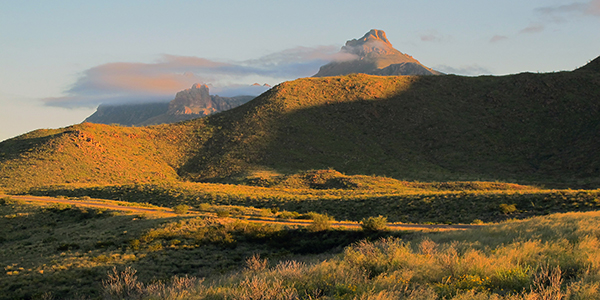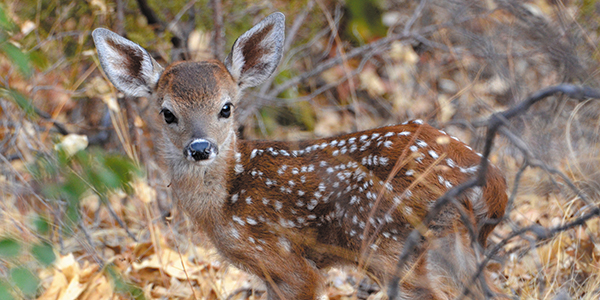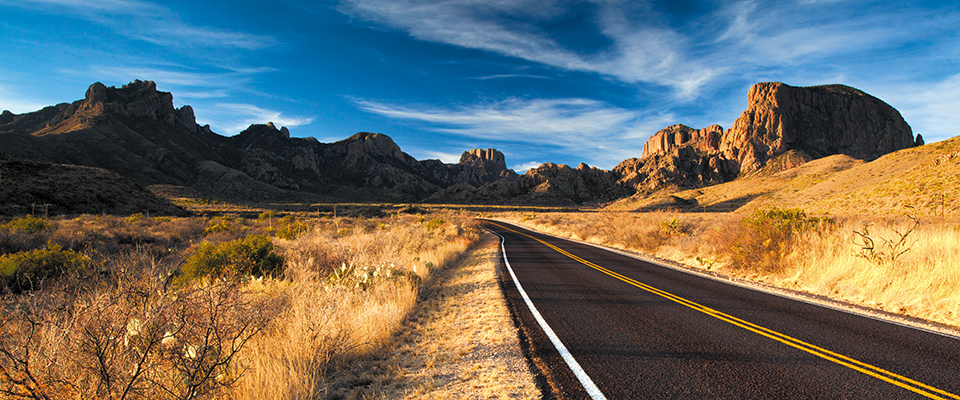Spotlight: Big Bend National Park
Walk on the wild side in a west Texas wonderland
As the Rio Grande snakes its way south and eastward between Texas and Mexico—forming a natural international border between the two—it bends sharply to the north before continuing on with its Gulf of Mexico-bound trajectory. This sharp bend, known matter-of-factly as the Big Bend, is home to Big Bend National Park, a more than 800,000-acre tract of protected Chihuahuan Desert wilderness.
If you’re looking for one of the most geologically diverse and historically fascinating places in the American Southwest, Big Bend National Park is it. Home to three different ecosystems (desert, mountain and river), a massive selection of wildlife and set upon a history of political conquest, Big Bend National Park is anything but generic.
Native Americans have occupied, hunted in and moved through the Big Bend area for thousands of years. As a result, the park is home to a rich array of ancient pictographs and archeological sites. Over the course of the last 500 years, the area has been claimed by six different nations and has witnessed the movements of various armies and raiding parties crossing the Rio Grande.

NPS Photo/Cookie Ballou
Geological Marvels
Today, that game of political chairs has finally settled, and the park is known more for its striking physical geography and its rich fossil beds. Once under a massive inland sea, the park has been a paleontological oasis full of sea fossils and dinosaur bones. More than 100 miles of scenic paved roadways make exploring the park’s main attractions quick and easy, while more than 150 miles of backcountry road make going off-road one of the area’s secret recreational treasures. Hundreds of miles of well-marked trails are available for hikers, bikers and horseback riders, while rafting, kayaking and canoeing excursions can launch on the legendary Rio Grande.
Start with a stop at any of the park’s main visitor centers—Panther Junction, Chisos Basin, Castolon, Persimmon Gap or Rio Grande Village. Each provides information on nearby campgrounds, trailheads and recreational options. Three National Park Service-operated campgrounds are available in the park, including one with full RV hookups—Rio Grande Village RV Campground.
Each visitor center offers a unique selection of perks. Castolon, for instance, doubles as an attraction and historic district all in its own. It features a range of on-site exhibits and historic buildings for guests to stroll about and explore.
Chisos Basin, surrounded by sheer-faced cliffs and a smorgasbord of trailheads, is a focal point for hikers. It’s also home to an outdoor amphitheater that often features educational programs during the summer.
Persimmon Gap is the main northern gateway to Big Bend National Park. Those who stop on their way in can explore to the Fossil Bone Exhibit Area or hit trailheads that weave their way to Dog Canyon or Devil’s Den.
Rio Grande Village attracts tourist activity year-round, boasting warm temperatures, incredible scenery and an abundance of wildlife, making this a popular spot for nature photographers. The village is also home to a general store, laundromat, showers and full-service RV campground.

A fawn along Basin Road.
Trails and Roads
When it’s time to explore the park in earnest, there may be no better way of doing so than by lacing up the hiking boots and simply hitting the old dusty trail. Big Bend National Park is a hiker’s dream come true. The choices are essentially endless, with clusters of nearby trailheads offering desert hikes, mountain hikes and riverside hikes in vast supply. As always, exercise caution and if necessary consult with rangers at one of the visitor centers before venturing into the backcountry of the park.
Visitors with a soft spot for fishing will find themselves just as at home in Big Bend as folks with a penchant for hiking. To fish the legendary Rio Grande or either of its two Big Bend-area tributaries (Tornillo Creek or Terlingua Creek), simply head to a visitor center and snag a free daily fishing permit—no Texas State fishing license is required here. Then find yourself a nice quiet spot to call your own for the day.
Finally, when you’re tired of exploring the park by foot or by fishing reel, hop in the car or truck and go for an auto tour. Some scenic routes require more robust off-road vehicles, but most of the park’s unpaved roads can be tackled with relative ease. Two of the more popular routes are the Dagger Flat Auto Trail and Old Maverick Road. The National Park Service recommends that you check your vehicle’s fluids and tires before using backcountry roads.
It’s no wonder why Big Bend National Park annually attracts an average of 300,000 visitors. The real wonder is why that number isn’t so much higher. At close to a million acres and featuring such a varied landscape, the park is packed with recreational hotspots and stunning natural landscapes. Take advantage of comparatively small crowds and experience this oft-overlooked natural gem in the Lone Star State.
For More Information
Big Bend National Park
432-477-2251
www.nps.gov/bibe
Texas State Travel Guide
800-452-9292
www.traveltex.com






